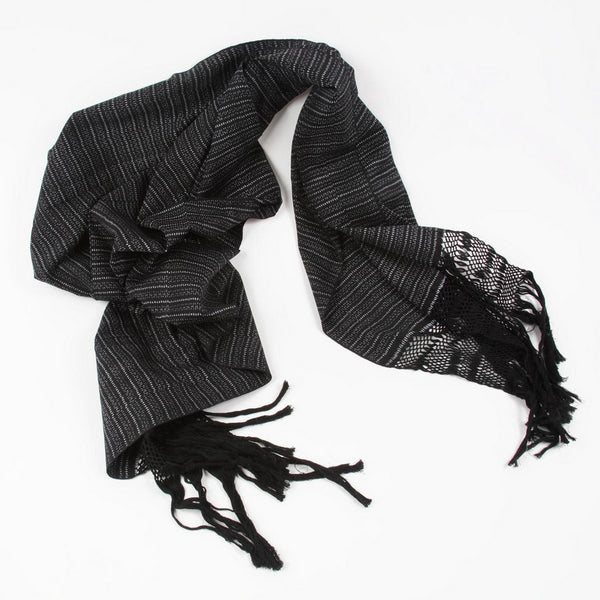THIS IS AN ARCHIVE OF EVERYTHING KIOSK HAS COLLECTED. TO MEET THE DIGITAL, WE HAVE A PHYSICAL, CURRENTLY IN STORAGE IN NEW YORK. NOTHING YOU SEE HERE IS FOR SALE. PLEASE USE AS A REFERENCE AND AN INSPIRATION AND PLEASE WRITE US IF YOU HAVE ANY QUESTIONS OR INFORMATION TO SHARE.
Black Rebozo
26" x 62"
Hand-Dyed Cotton
MEXICO
Xochitlán de Vicente Suárez is a small municipality located on the eastern slopes of the Sierra Madre Mountains in an area of Puebla State known as the Sierra Norte. In 2000, the district was home to 11,561 people, most of whom are Nahua indigenous people who speak a Uto-Aztecan language known as Highland Puebla Náhuatl. You can find rebozos of this kind all over Mexico, but this is the style that every woman in this region wears. Although I had seen other variations on the rebozo, I found the simplicity of the black and white really striking. This style of rebozo is dyed by hand using the Ikat technique - in this case, the warp was selectively colored before the piece was woven. Ikat-dyed textiles from Asia appeared in Mexico in the 16th century as part of the extensive trade between Asia and Europe that crossed Mexico during the Spanish colonial period. Soon after the Spaniards arrived, they insisted that the Mexican women wear a head covering when entering the churches - out of this necessity, combined with the Spaniards' imported weaving skills, came the rebozo. The hand-tied barbas or "tail/fringes", add much detail and value to each of the rebozos. Until quite recently, the rebozo was thought of as a symbol of purity and no self-respecting woman left the house without her rebozo. If a young man snatched a rebozo from a young woman, then the woman considered herself to belong to that man. Hmmmmmmmm…………
